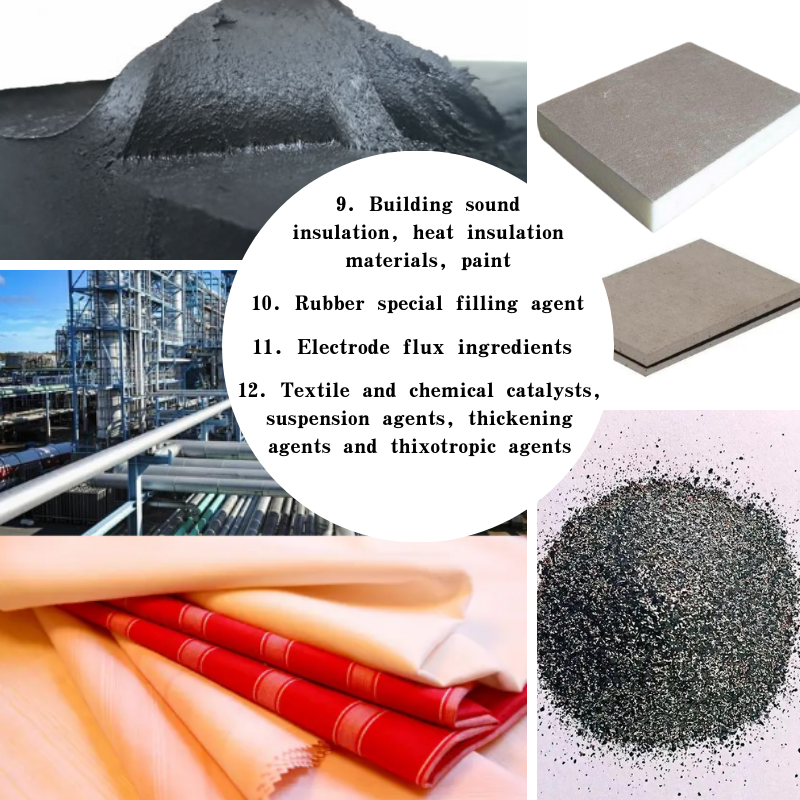
composite mica
Composite Mica Understanding Its Properties and Applications
Mica is a naturally occurring mineral known for its exceptional thermal stability, electrical insulation, and flexibility. When we talk about composite mica, we are referring to mica that has been engineered or modified to enhance its properties for various industrial applications. This innovative material combines the unique characteristics of mica with other substances, resulting in composites that exhibit improved performance, durability, and versatility.
One of the primary benefits of composite mica is its excellent electrical insulation capabilities. Mica is already known for its high dielectric strength and thermal resistance, making it an ideal candidate for electrical insulation. By creating composite materials that blend mica with plastics or other insulating materials, manufacturers can produce components that are lightweight yet maintain high levels of electrical resistance. This is particularly important in the electronics industry, where the demand for reliable and lightweight insulating materials is crucial for the performance of devices such as capacitors, transformers, and circuit boards.
In addition to electrical insulation, composite mica exhibits outstanding thermal stability
. Mica can withstand high temperatures without degrading, which is an essential quality in industries that operate under extreme heat conditions. The incorporation of mica into composites can enhance heat resistance significantly, making these materials suitable for applications in aerospace, automotive, and industrial sectors. For example, composite mica is often used in the production of heat shields, gaskets, and fireproof materials, providing a crucial barrier against heat and flames.composite mica

Another significant advantage of composite mica is its mechanical strength and flexibility. When combined with other materials, mica can improve the overall toughness and resilience of the composite. This property is particularly advantageous in the production of roofing materials, insulation boards, and floor tiles, where both strength and flexibility are required. The inherent flexibility of mica also allows for the creation of materials that can bend and flex without breaking, making them ideal for applications where traditional materials might fail.
Moreover, composite mica finds applications in the cosmetics industry as well. Mica is often used as a pigment due to its shimmering effect, and when combined with other cosmetic ingredients, it results in products that offer a unique aesthetic appeal and texture. Composite mica enhances the formulation of makeup products, providing a silky finish while also improving their longevity and adhesion to the skin.
In the realm of construction, composite mica materials are making their mark as well. Their resistance to moisture, fire, and heat, combined with their lightweight properties, make them suitable for insulation materials and decorative elements in buildings. As architects and builders seek sustainable and efficient materials, composite mica stands out as a viable option that meets both performance and aesthetic needs.
In conclusion, composite mica represents a significant advancement in material science, combining the natural benefits of mica with modern technology to create versatile and high-performance materials. Its applications span a wide range of industries, including electronics, automotive, aerospace, cosmetics, and construction. As the demand for innovative materials continues to grow, composite mica is likely to play an increasingly important role in shaping the future of material applications.
Share
-
Fly Ash Solutions Enhanced by GPT-4 Turbo | Sustainable InnovationNewsAug.01,2025
-
Natural Premium Bentonite Cat Litter - Superior ClumpingNewsJul.31,2025
-
Premium Resin Coated Sand - High Heat Resistance CastingNewsJul.31,2025
-
High Quality Silicon Carbide Grit for Abrasive ApplicationsNewsJul.30,2025
-
High-Quality Ceramsite for Plants & Gardening | Lightweight PebblesNewsJul.29,2025
-
Premium Burgundy Glass Marbles for Vases & Shooter GamesNewsJul.29,2025






